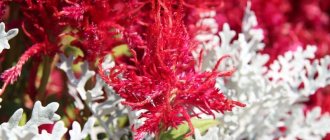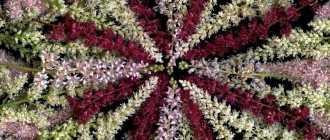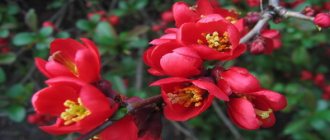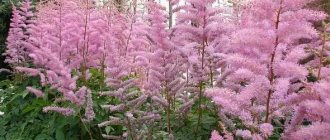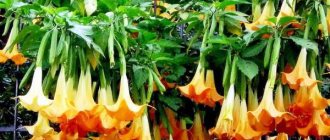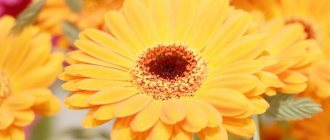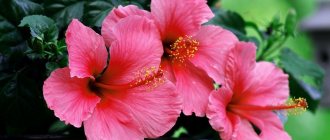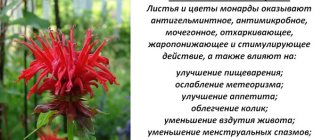Astilbe Peach Blossom is a common type of crop that is distinguished by the high decorative qualities of not only its inflorescences, but also its leaves. The popularity of the plant is due to its shade tolerance and unpretentiousness, which allows it to be used for landscaping secluded corners of the garden where other crops do not survive. In order to correctly combine this Japanese astilbe with other plants, you need to study in advance the characteristics of its growth, flowering and cultivation.
This hybrid variety belongs to the category of early flowering
History of selection
This hybrid variety of Japanese astilbe appeared more than 90 years ago thanks to the efforts of the German breeder Georg Arends. Its ancestor was a wild species that is found in Japan, for which the group received its common name.
For 54 years, the breeder worked to create new species of this crop, and during this time he managed to obtain 84 varieties. Among them, a group of pink Japanese hybrids was bred, which includes only 2 varieties of astilbe: Peach Blossom, Queen Alexandra. Both types were awarded a gold medal in 1904 at an exhibition in London, which confirmed their high decorative qualities.
Astilbe Hip Hop
This variety has an unusual flower color - pink and red on one specimen. It begins to bloom in mid-spring, in May. This unique plant easily tolerates heat and forty-degree frosts. But it is moisture-loving, so it requires regular watering.
Astilbe Hip Hop gets along well in the flowerbed along with such “neighbors” as phlox and carnations. The astilbe flower looks great with roses. The bush also looks impressive in a solo setting, especially if bushes or coniferous trees grow in the background.
Astilbe Hip Hop has original flowers
Description of Astilbe Peach Blossom
Japanese astilbe Peach Blossom is a perennial herbaceous shrub, the above-ground part of which dies off with the arrival of winter and grows back in the spring. This species forms a spreading bush, which must be taken into account when placing it on the site. The height of the plant reaches 60 cm, and the diameter is 50-60 cm.
The leaves of Astilbe Peach Blossom are trifoliate, dark green in color with a glossy shiny surface. They form a rosette and are supported by long petioles. The plates have a dense structure. Stems are erect.
The growing season of the bush begins in the second half of April in the conditions of the central regions. The rate of green mass growth depends on the air temperature; the optimal temperature for growth is 10 degrees.
The rhizome of this hybrid is loose and woody. Located in the upper layers of the soil. Every year, daughter buds of restoration grow on top of it, and the lower part gradually dies off.
Important! The Japanese Peach Blossom astilbe bush grows within 2 years.
Frost resistance
Peach Blossom has increased frost resistance. The plant does not suffer from temperatures dropping to -25 degrees. Therefore, this type of crop can be grown in the central and northern regions. Namely, where the temperature in winter does not fall below this mark.
Drought resistance
Astilbe japonica Peach Blossom prefers to grow in partial shade. When planted in a sunny area, burns appear on the leaves, the inflorescences become smaller, and the plant dies over time. But even when placed in deep shade, the decorative qualities are reduced. In this case, the panicles-inflorescences of Peach Blossom become loose.
Important! This plant is not suitable for southern regions, as it does not tolerate heat and dry air.
Bloom
Buds on Peach Blossom astilbe begin to appear at the end of May and continue to form for 3 weeks. The shrub blooms at the end of June. The duration of the active period is 2 weeks.
The flowers of this type of astilbe are small, pink in color with peach notes. They are collected in paniculate inflorescences of medium density. Each of them has a main axis, from which intensively branching lateral spurs extend at right angles. The length of the inflorescences of Peach Blossom is 15 cm.
At the end of flowering, the panicles become as lush as possible
The decorative qualities of Peach Blossom astilbe directly depend on the presence of moisture in the soil. With its deficiency, the duration of flowering and the number of buds is noticeably reduced. Therefore, it is necessary that the soil is always slightly moist to a depth of 20 cm.
Important! Astilbe Peach Blossom is suitable for forcing.
Resistance to diseases and pests
Astilbe Peach Blossom, like other types of crops, has high natural immunity to diseases. But when planted in heavy clay soil, the roots of the plant may rot from excess moisture.
Also, sometimes, if the growing conditions are inappropriate, astilbe Peach Blossom may suffer from the following pests:
- slobbering pennice;
- slugs;
- strawberry nematode.
General characteristics of the group
Description
According to the development cycle, Japanese astilbe is a herbaceous, winter-hardy perennial, the decorative properties of which are both flowers and foliage. The ground part dies off in the fall, and in the spring young shoots appear from the awakened buds.
The height of the bush of most representatives of Japanese astilbe varies within 50 cm. Some varieties can be classified as real giants - up to 80 cm.
The inflorescences of this type of astilbe are predominantly of high density, rhombic, reaching sizes of 15-30 cm. The color range is very rich. The group contains both samples with panicles in dull, dull tones, as well as saturated bright ones: carmine, pink, lilac, cream, etc.
The leaves are bipinnate, glossy, often serrated, sitting on brownish petioles. Specimens with both dark and light green plates are cultivated. All varieties have a pointed tip of the leaf.
Agricultural technology
Japanese astilbe prefers slightly acidic (neutral) soil, loam. Many varieties are propagated both by self-sowing and by dividing the bush. Seed germination is low (about 70%). However, this disadvantage is compensated by the amount of planting material - up to 20 thousand dust-like seeds are hidden in a gram of dry inflorescence.
More often, gardeners propagate Japanese perennials by dividing the bush, which is a vital necessity for astilbe. Frequency: 1 time (at the end of August) every 4 years.
Less often, flower growers throw seeds into open ground before winter. And finally, sowing Japanese astilbe for seedlings can be considered a phenomenon. Deadline: end of February.
When preparing holes for divided rhizomes, maintain a distance of ± 35 cm. This distance is enough so that neat bushes do not feel crowded, and soil spots do not show through the lush foliage.
Ideal growing conditions: partial shade, moisture. Some varieties of Japanese astilbe are sun tolerant. Drought is equally destructive for all members of the group.
Important! Exposure of the rhizome of Japanese astilbe is fraught with freezing of the renewal buds, cessation of flowering and death of the plant. Annual hilling is mandatory!
The main purpose
Japanese astilbe is the ancestor of many early and medium-sized hybrids, which have become an indispensable element of any shady flower garden: mixborders, borders. You cannot do without Japanese perennials when designing an artificial pond or stream. This plant also showed itself well in decorating the trunk circles of tall trees in the garden.
Application in design
Astilbe Peach Blossom looks great as a single plant against a green lawn, as well as in a group planting. Conifers and other green shrubs best highlight its beauty.
To create flower beds and mixborders, it is recommended to combine this hybrid with irises, hostas, ferns, anemone, phlox, daylilies and periwinkle. You should also plant Peach Blossom astilbe in a flower bed with primroses. After they wither, the bush will be able to successfully disguise the resulting voids.
Astilbe Milk and Honey
The perennial Chinese shrub milk and honey astilbe is small in stature, together with its inflorescences it grows up to 40-60 cm. Like all flowers of this family, it loves moist, fertile soil, but is more heat-loving and drought-tolerant than its “sisters”. Therefore, it needs to be planted on the sunny side. Tolerates frosts.
The leaves on the stems grow densely. Young foliage has a silvery vein pattern that gradually turns green. In the active flowering phase, milk and honey astilbe blooms white inflorescences with candles, which turn pink by the end of summer.
Astilbe Milk and Honey bloomed
Reproduction methods
Astilbe Peach Blossom can be propagated by dividing the bush and by seeds. The first option is the most effective, as it allows you to preserve all the specific properties of the mother plant.
It is necessary to plant the astilbe bush 5 years after planting
The division procedure should be carried out in early spring. To do this, the bush should be dug up and thoroughly cleared of soil. After this, use a sharp knife to divide into parts, each of which should have 5 recovery buds and well-developed root processes. Then plant it in a permanent place.
Astilbe Younique Carmine
The hybrid astilbe variety Unique Carmine was bred in Holland. The compactness and decorativeness of the bush with a height of no more than 50 cm allows it to be used for planting in groups - 4-5 species of the same variety. A carmine-colored flower planted next to other plants will look even more interesting. Younique carmine astilbe seedlings can be planted in any month of spring and summer.
Important! Young seedlings must be watered regularly and planted in a shaded area in breathable, fertilized soil.
Flowering of carmine astilbe lasts two months. The inflorescences cover the bush with such a dense carpet that it creates the effect of an airy bright red, pink, purple or white cloud, depending on the type of flower. Green leaves with jagged edges densely wrap the stems. The roots of the plant grow in a special way, growing not deep into the soil, but to the top of the soil. Therefore, by winter they need to be well covered with earth and insulated. The rhizomes can be divided and planted after 4-5 years in early spring. The distance between astilbe plants should be at least 35 cm. Decorativeness and small growth allow you to grow a miniature flower in pots on the window.
“Carmine cloud” astilbe Younique Carmine
Planting and care
Astilbe Peach Blossom can be planted in spring, summer and fall. The plant easily tolerates this procedure and quickly adapts to new conditions. For the bush to fully develop, protection from direct sunlight is necessary, so it can be planted close to buildings and other tall crops. The Peach Blossom variety is not picky about the soil composition, but the soil must have good air and moisture permeability.
Peach Blossom astilbe can be placed in areas with high groundwater levels.
Landing algorithm:
- Prepare a planting hole 30 cm wide.
- Pour humus and 1 tbsp into the cavity. l. bone meal, mix thoroughly with soil.
- Inspect the seedling, straighten the roots and remove all broken shoots.
- Place it in the center, cover it with soil so that the growing point is 4 cm below the soil surface.
- Water generously.
Important! You cannot add nitrogen fertilizers during planting, as they interfere with rooting.
What diseases is it susceptible to and when to plant astilbe
Many novice gardeners are interested in the question of when should astilbe be planted. Here opinions differ, but the result remains the same - young astilbe is very sensitive to even the smallest frosts, so the best growing periods are spring and autumn.
It's already quite warm in spring. The soil is filled with moisture and nutrients, which is a very important criterion for good growth of astilbe.
Naturally, astilbe can be planted in both autumn and summer. However, then additional care for the young plant will be required. It is necessary to create a moderate humid zone and feed the plant.
But the following ailments occur:
- Slobbery pennies. The slobbering frog is a small pest that attacks the petioles of leaves. The first thing after infection is that a formation similar to saliva appears on the flower, where larvae live, feeding on the juice of the flower. In neglected form, the plant stops growing, it fades, and loses its bright color.
- Strawberry nematode. Strawberry nematodes are microscopic worms that attack all areas above the ground. A sign of infection is the appearance of dead areas, the plant gradually dries out and eventually dies. It is almost impossible to fight such a disease, so it is necessary to dig up the flower and destroy it.
- Horse rot. If the watering norm is not observed, the plant begins to dry out, and a dark border appears on the leaves.
- Bacterial spotting. The disease progresses very quickly, so it is necessary to start processing astilbe as soon as possible.
Astilbe is a plant that is rarely attacked by pests and diseases. Caring for astilbe is easy. It is only necessary to follow certain rules so that the plant does not get sick and feels comfortable.
Features of cultivation
Japanese astilbe Peach Blossom needs good watering, as even slight drying out of the roots can lead to death. Therefore, you need to moisten the soil regularly in the absence of rain. To do this, use settled water at a temperature of 10-15 degrees. After each watering, the soil surface needs to be loosened to improve its breathability.
To prevent moisture evaporation during hot periods, you should mulch the soil at the base with humus or sawdust.
The peculiarity of the plant is that its young roots grow from above and if there is a lack of their nutrition, the bush becomes smaller. Therefore, astilbe needs to be periodically hilled up by adding soil at the base.
Also, caring for the plant involves fertilizing. The first time the bush needs to be fertilized in the spring at the beginning of the growing season. During this period, you can use fertilizers with a high nitrogen content. The second feeding should be carried out during the formation of flower stalks, and the third - in the fall. At this time, phosphorus-potassium mixtures should be used.
Protection from diseases and pests
Japanese astilbe variety Peach Blossom is rarely affected by fungal diseases. To completely eliminate this possibility, you should spray the plant with Hom every spring.
When pests appear, it is recommended to use the following drugs:
- "Aktara";
- "Confidor Extra";
- "Aktellik".
To prevent damage, you need to periodically sprinkle the soil at the base of the bush with tobacco dust.
Preparing for winter
In the first half of October, Peach Blossom astilbe needs to be prepared for wintering. During this period, it should be watered abundantly, in the absence of precipitation, and fertilized using organic and mineral fertilizers. To do this, dilute 1 liter of mullein or 0.5 liters of chicken manure in 10 liters of water, and also add an additional 20 g of superphosphate and 15 g of potassium sulfide.
After the foliage withers, you should trim the shoots at the base, sprinkle the roots with additional soil, and lay spruce branches on top.
Important! The shelter should be removed with the arrival of spring, without waiting for steady heat, so that the plant does not dry out.
Types and varieties of Japanese astilbe
Beginning gardeners often encounter difficulties when choosing a beautiful and unpretentious flower. Among the popular herbaceous plants for open ground, Japanese astilbe occupies one of the leading positions. This variety is distinguished by its unique diamond-shaped inflorescences.
When choosing an ornamental plant, you should pay attention not only to external characteristics. It is necessary to take into account the characteristics of the flower, the conditions necessary for it and the care requirements. Therefore, it is recommended to familiarize yourself with the most popular decorative varieties.
Avalanche
Ornamental perennial herbaceous plant. The maximum height of the bush is 60 cm, width is 40 cm. During the flowering period, the Japanese astilbe “Avalanche” is covered with numerous creamy-white flowers. They form drooping panicles 18-20 cm long.
Place in the garden
Astlba has earned its reputation as a plant for shady places, which receives special attention in garden design. Astilbe species and varieties really prefer partial shade with good moisture, because in nature they are found under the canopy of deciduous forests and near ponds.
Astilbe in site design can be used in single and group plantings, as a tapeworm and container plant. It will fit organically into a mixborder, ridge or curb, especially in shady areas, or decorate the trunk of a tree or shrub. Dwarf and drought-resistant varieties can revive the alpine hill. However, the plant will look most organic near a pond.
The most popular combination is a flower garden of hosta and astilbe. The plants get along well, and the contrast of whole and dissected leaves allows you to emphasize the individuality of each of them. It can be argued that astilbe and hosta are the best partners. although this plant combines well with a huge number of species.
Astilbe will look quite organic with various bulbous plants. Carved leaves will be an excellent backdrop for spring-flowering species, small-bulbous plants, hyacinths, tulips, and saxifrages. Astilbes look spectacular in the company of daylilies, phlox, irises, bells, and tall grasses. Heucheras, bergenia, and geraniums are suitable for the foreground.
The lacy foliage of astilbe is an excellent background for flowering bulbs. In summer, grown astilbes will hide the sloppy leaves of faded tulips and daffodils
Different varieties and types of astilbe can organically complement each other. You can always choose dwarf forms for the foreground and tall ones for the background. Different colors of flowers, texture and shape of leaves will create the necessary contrast.
Unpretentious, frost-resistant, shade-tolerant and multifaceted astilbe is a real gift for the gardener. Even “without shine,” no matter what flowers astilbe is planted with, it can decorate the area, and the variety of cultural forms makes the plant truly universal.
How to plant astilbe seeds for seedlings in spring
One way to grow astilbe is from seeds. The method is not complicated, but rarely used. The fact is that flowering, with this method of planting, begins in the 3rd year and, most importantly, many parental characteristics are not transmitted through seeds when planted; in the end, you may end up with something completely different from what is shown on the package of seeds.
Sometimes plants appear with very similar characteristics to the mother, and sometimes similar to another variety. By the way, sometimes completely inconspicuous specimens grow. In any case, if you are interested, experiment.
When to plant perennial astilbe
The best time for planting seeds is February-March. In this case, the planted seeds will have time to grow and get stronger by June, and those transplanted into open ground will take root and get stronger for wintering. If you purchased an already sprouted sprout, then the best time for planting is the end of May, when the return frosts have passed.
How to grow astilbe from seeds at home for seedlings
If you nevertheless decide on this method of planting, then first prepare the soil. As I already wrote, astilbe does not make any special demands on the soil, so for planting you can take a regular soil mixture, adding a little peat and sand to it for looseness. Pour it into the box and smooth it out.
Before sowing, water the soil well, let the water soak in, and then spread the seeds over the surface without sprinkling anything. It is more convenient to do this with a slightly moistened toothpick, since they are very small. Then cover the box with the plantings with glass or a bag. Now all your attention should be paid to ensuring that the earth does not dry out even for an hour. Water carefully, along the edges of the box, the soil will soak itself.
Maintain the temperature for germination at 18-22 degrees. The germination rate of the seeds is very low; seedlings will appear in 3-4 weeks. If after 3 - 4 weeks the seedlings have not appeared, it is recommended to carry out stratification, i.e. put the box with seeds on the bottom shelf of the refrigerator at 2-4*C for another 2-4 weeks.
The hatched seeds are transplanted into pots and left in a bright place at a temperature of 18-20*C. Grown plants are planted in open ground in May-June, when the risk of return frosts has passed.
